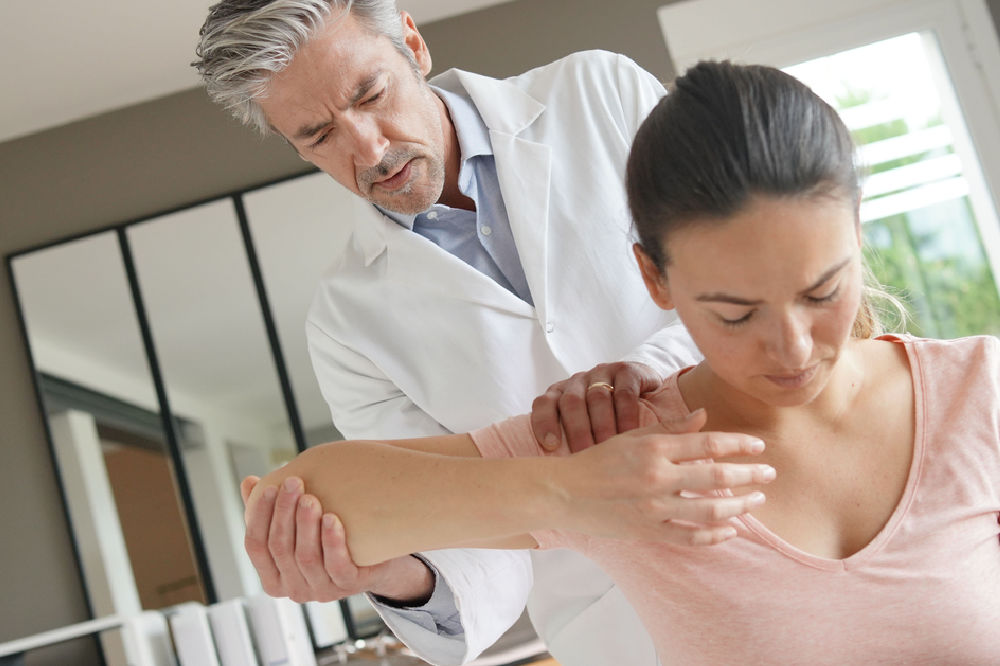Shoulder injuries are common in motor vehicle accidents because of the trauma involved. Even those securely fastened into 3-point lap and shoulder seat belts are vulnerable to shoulder injuries that happen when their bodies are violently tossed from side to side or slammed against the interior of the vehicle. In 2020 there were 38,913 non-fatal injuries resulting from Indiana car accidents; many of those were injuries to the shoulder, particularly to the left shoulder of the driver and right shoulder of the front seat passenger.
If you have experienced a shoulder injury in an Indiana motor vehicle accident as a result of another person’s negligent driving, you can turn to the experienced legal team at Crossen Law Firm to help you get the compensation you need and deserve.
Common shoulder injuries:
Torn rotator cuffs
- The rotator cuff is made up of 4 muscles and tendons that hold the humerus in place in the socket of the upper arm. When these tendons pull away from the shoulder blade, it becomes difficult to raise or rotate the arm. According to the Cleveland Clinic, rotator cuff problems affect more than 2 million people each year.
- Rotator cuff injuries can be painful, especially when you try to reach for something or move your arm. In many cases, there is a dull ache that worsens at night, especially when lying on the injured side; this makes sleep difficult or impossible.
- Partial or full rotator cuff tears are generally diagnosed through X-Rays, ultrasounds, or MRIs (magnetic resonance imaging).
- Treatment can include:
- Rest and ice
- NSAIDs (Nonsteroidal anti-inflammatory drugs) such as aspirin or ibuprofen
- Physical therapy
- Steroid injections into the shoulder
- Surgery
- Unfortunately, in cases where the tendon is completely torn from the bone or there is no improvement after several months, surgery may be necessary to reattach the tendon. Surgery may involve arthroscopic tendon repair, open tendon repair, tendon transfer, or a complete shoulder replacement.
Fractures
- The 3 bones that make up the shoulder are the clavicle (collar bone), scapula (shoulder blade), and humerus (large upper arm bone). Any one of them may be broken in a high-intensity accident. These fractures cause pain, swelling, tenderness, a deformed appearance, or a feeling that your shoulder isn’t in the right place.
- Generally, diagnoses are made with X-Rays, CT scans, MRIs, or musculoskeletal ultrasounds.
- Treatment can include:
- Rest and ice
- A sling (to immobilize the area)
- Pain medications
- Surgery
- In complex cases or cases where the bone has come through the skin, surgery may be necessary. An orthopedic surgeon may need to use pins, screws, plates, or even bone grafting or joint replacement for shoulder fracture fixation surgery. If partial shoulder replacement surgery or reverse total shoulder replacement surgery is necessary, a metal ball and cup may take the place of the shoulder’s natural ball and socket.
Dislocations
- Anterior dislocations (97% of shoulder dislocations are this type) of the shoulder happen when the arm is twisted outward when it is above shoulder level. This can occur in a motor vehicle accident when there is direct trauma to the shoulder, especially if someone has raised their arm to brace themselves for impact.
- Treatment can include:
- Maneuvering the bones back into place, followed by immobilization (splint or sling), and physical therapy. In some cases, surgery is necessary, especially if nerves or blood vessels have also been damaged.
- As you can imagine, even a simple dislocation can take weeks of rest and rehabilitation to heal, not to mention pain; surgery only adds to the complications.
Soft tissue injuries
Although soft tissue injuries aren’t as inherently damaging as rotator cuff injuries or fractures, they are extremely painful and can take weeks to heal. A strained ligament, muscle, or tendon can make it difficult to move your shoulder because all three of these soft tissues work together to help you move your arm and shoulder.
AC joint injuries
Acromioclavicular joint injuries happen when the humerus, the largest bone in the arm, is damaged by the pressure of the seatbelt. This compression causes the bones between the collarbone and the shoulder to separate. Treatment generally involves rest, ice, and medications that reduce inflammation. Surgery may be necessary, but even without surgery, this type of injury takes approximately 3 months to recover from.
Thoracic outlet syndrome
If nerves, veins, or arteries are damaged or compressed in the thoracic outlet (the narrow space between your clavicle and first rib), you may feel pain, weakness, or numbness. This syndrome (TOS) is commonly caused by motor vehicle accidents, according to the NIH; however, it can be difficult to diagnose definitively because symptoms are often delayed.
Seek medical attention
It’s important to seek medical attention after a motor vehicle accident because you may not realize how seriously you have been hurt while you are still full of adrenaline. Shoulder injuries may be immediately apparent, or they may make themselves known after days or weeks. The sooner you can begin treatment and begin documenting your injuries the better.
Your car accident attorneys will need to prove that the other driver’s lack of care caused your accident. They will also need to prove that your shoulder injury is a result of the accident and that you were less than 51% at fault.
Your legal team will build a case to make sure that you are fairly compensated for all economic and noneconomic injuries.
With over 20 years of experience and millions of dollars awarded in compensation to our clients, our Indianapolis personal injury lawyers understand how to best help you obtain a favorable outcome for your shoulder injury. Get started on your case today by scheduling a free consultation.
Call 317-401-8626 or Contact Us online.

 317-401-8626
317-401-8626 
.jpg)